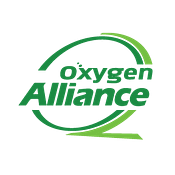Handling Demand in Emergencies Global healthcare systems faced significant challenges as a result of the COVID-19 pandemic, particularly in meeting the increased demand for medical oxygen.
The crisis exposed serious flaws in our healthcare system and sparked an innovative wave of oxygen supply technology fixes. What cutting-edge techniques and technologies have been created to meet the pressing need for oxygen in the midst of this unprecedented worldwide health crisis?
The demand for medical oxygen increased significantly as a result of the substantial rise in COVID-19 cases, severely taxing hospitals and health systems. The difficulties that traditional supply mechanisms face emphasize the need for creative solutions to preserve the ecosystems of medical oxygen that save lives. This complex scenario brought attention to the serious shortcomings in patient care and the current state of medical equipment maintenance, as well as the critical importance of medical oxygen in treating severe respiratory conditions.
Examining Technologies for Onsite Oxygen Generation The installation of pressure swing adsorption (PSA) plants in healthcare facilities is one of the noteworthy developments. These systems were essential in guaranteeing that patients received a steady supply of oxygen due to their remarkable capacity to separate oxygen from ambient air. A flexible way to handle the fluctuating oxygen demands during the pandemic was made possible by PSA plants’ ability to be swiftly set up and modified to match the unique needs of a facility.
Transportable oxygen sources Using deployable oxygen concentration systems (DOCS) and portable oxygen concentrators were essential to crisis management. These machines, which were intended to draw oxygen from the ambient air, were widely used in both temporary emergency shelters and hospitals. Since portable oxygen concentrators enable patients with milder symptoms to receive oxygen therapy at home, they have become essential in home care settings. Their smaller size and lack of reliance on big tanks or liquid oxygen have helped to ease the burden on hospital infrastructure.
Government and industry response Infrastructure and capacity for oxygen production have expanded, thanks in large part to the quick and coordinated actions of governments and businesses around the globe. Many countries saw the rapid adoption of innovative policies and financial incentives to support the expansion of oxygen production and distribution networks. The construction of new manufacturing facilities, the conversion of industrial oxygen plants into medical-grade facilities, and the use of air transportation and oxygen express trains as logistical tools were all necessary to move oxygen supplies from producers to areas of high demand.
The COVID-19 pandemic brought attention to how crucial flexibility and innovation are to healthcare systems. The effective management of the oxygen crisis was largely dependent on the effective implementation of portable systems, the proactive actions of industries and governments, and the onsite deployment of oxygen generation technologies. By integrating these innovations into traditional medical procedures, healthcare systems can be made much better. This will ensure that the systems are sustainable and scalable for future emergencies and that medical oxygen will be available when it is most needed.
References
Gaur, N., and Jha, M. (2022). From production to consumption, medical oxygen goes through a life cycle. 11(1231), 1231–1236, Journal of Family Medicine and Primary Care. 10.4103/jfmpc.jfmpc_956_21 is the DOI.
International Health Organization. (2020). Sources and distribution of oxygen for COVID-19 treatment facilities The information about oxygen sources and distribution for COVID-19 treatment centers was retrieved from https://www.who.int/publications/i/item.
R. W. McCoy (2013). Storage and metering of oxygen within the house are options for oxygen therapy equipment at home. 658–685 in Respiratory Care, 58.
